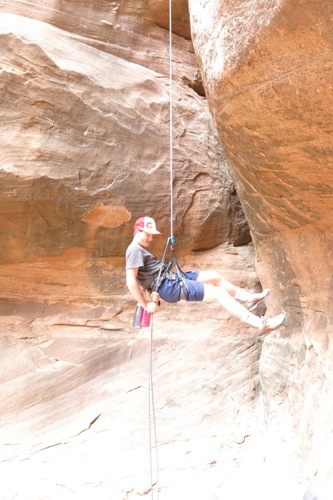This past week our school completed our annual Experiential Education Week. My Course was titled Polar to Solar. Though the students did not really go "polar", we did all climb to the top of a 12,200 foot peak in the La Sal range of Utah. Here, students experienced alpine tundra conditions first hand. While skiing and snow camping in these mountains for 3 days we all pondered just what it takes to survive the extremes of tree-line and tundra.
 Aspen High School students on the top of Mount Laurel in the La Sal mountains of Utah.
Aspen High School students on the top of Mount Laurel in the La Sal mountains of Utah.
 A happy snow camper
A happy snow camper
After a few days in the snow, we were ready for the "solar" part of the trip. For this we traveled to the canyon country near Green River, Utah. This hot, and dry environment contrasts starkly with the snowy peaks of the La Sal mountains. The challenges our group faced here involved finding water and negotiating narrow canyons.
 The La Sal mountains in stark contrast to the dry Utah desert.
The La Sal mountains in stark contrast to the dry Utah desert.
 Exploring a desert slot canyon
Exploring a desert slot canyon
 Rappelling into a slot canyon
Rappelling into a slot canyon
The desert life zone with its extremes of temperature and lack of moisture can be a harsh place to live. Plants and animals that do survive these conditions are supremely adapted. During our visit we noted and learned about the strategies living things have evolved to cope with such extremes. This experience made me think of my upcoming trip to the arctic to study hibernating arctic ground squirrels. Like the alpine tundra and desert, the high arctic presents many challenges to all life. Soon I will experience this first hand!
 Teamwork
Teamwork
During the Polar to Solar course, students were faced with numerous challenges. Each of these was overcome with the help of the entire team. Encouragement and support for each other were the order of each day. In the end, we all learned how to travel, camp, and enjoy wilderness while leaving no trace of our passage. We also gained a new respect for the life forms that call these areas home.


Comments